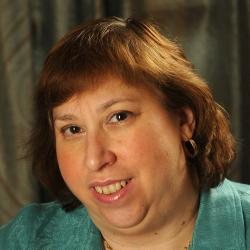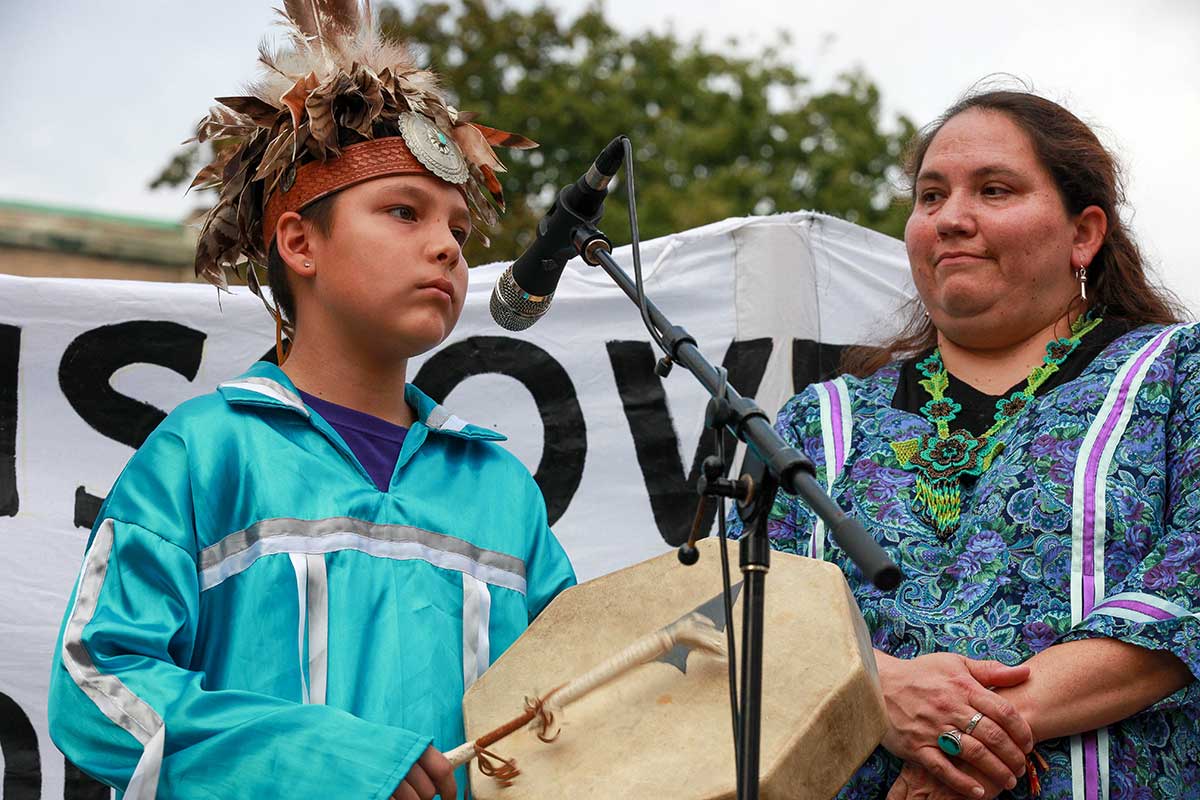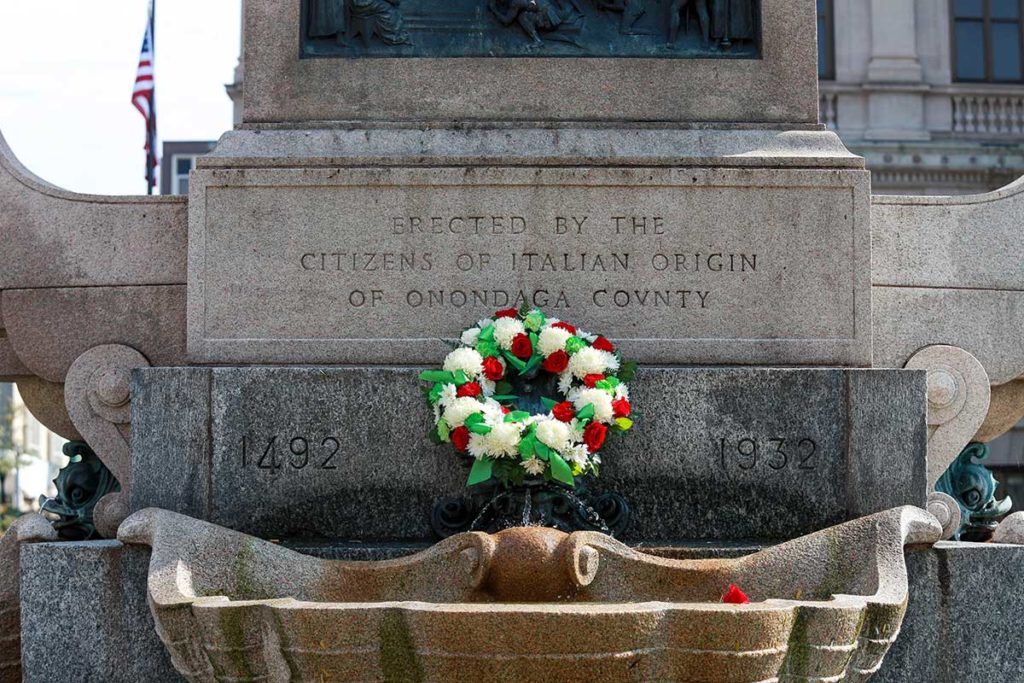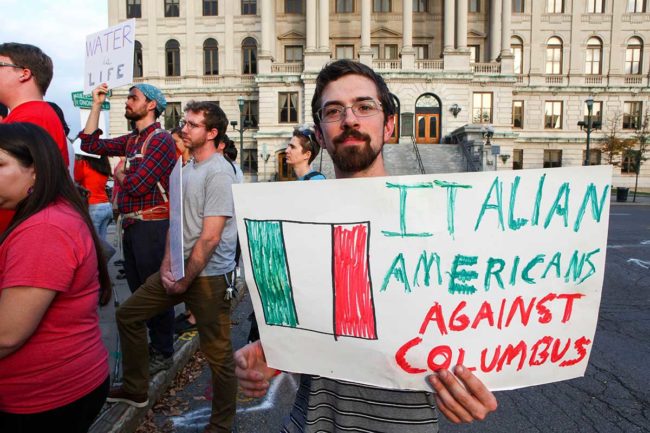Movement to drop Columbus Day for Indigenous Peoples Day comes to Syracuse


Is it “Goodbye, Columbus” for Syracuse? Mayor hosts dialogue circles around Columbus Day, given the historical figure’s controversial history.`
A child speaks at the Oct. 8 celebration of Indigenous Peoples Day, organized by Neighbors of the Onondaga Nation. (Michael Davis/Syracuse New Times)On Oct. 12, 1934, an estimated 40,000 people filled the streets of downtown Syracuse for a Columbus Day parade, followed by the dedication of the city’s Columbus monument.
The “abounding panorama of pageantry and joy” featured a mile-long line of marchers, a 500-voice children’s choir and speeches by community leaders, according to the Syracuse Herald, precursor to the defunct Herald-Journal. The celebration ended “fittingly,” with a dinner at the 10-year-old Hotel Syracuse.
Syracuse Mayor Rowland Marvin’s 10-year-old daughter, Irene, “pulled the silk cords which threw aside the covering of the statue,” an 11-foot, 3,000-pound bronze likeness of Christopher Columbus, sculpted by V. Renzo Baldi, of Florence, Italy. The monument, designed by renowned architect Dwight James Baum, was the culmination of a 25-year campaign among local Italian-Americans seeking to highlight their ethnic pride and patriotism with a memorial to the Italian navigator who sailed to the Americas on behalf of Spain in 1492.
Thousands of Italian immigrants arrived in Syracuse between the 1880s and 1920. Many first-, second- and third-generation Italian-Americans pitched in for the Columbus monument. Joseph J. Pietrafesa, owner of the local clothing manufacturer Learbury’s and co-chair of a fundraising campaign for the monument, described the dedication as “a moment of joy and triumph.”
Mayor Marvin called the monument “a triumph of civic spirit. . . (that) will remain as a thing to be admired and treasured. The children of children who are here will find it as heroic, as inspiring as we find it today.” Eight decades later, though, critics say monuments to Columbus ignore that his four trips to the Western Hemisphere highlight colonialism, racism and genocide.
Ahead of Columbus Day, which fell this year on Monday, Oct. 8, Mayor Ben Walsh announced the city has partnered with InterFaith Works to hold a series of dialogues on how Syracuse will commemorate the national holiday. InterFaith expected about 15 people to participate in the first five-week dialogue about the historic figure some revere as a brave explorer and others revile as a cruel, greedy invader. Additional dialogues will take place in 2019. A report with recommendations from all the dialogue groups is expected in the first half of 2019.

The annual Columbus Day commemoration includes a wreath-laying ceremony. (Michael Davis/Syracuse New Times)
“I’m hopeful we can come to a better understanding of each other’s interests and concerns and find common ground together,” Walsh said in a press release. Deputy Mayor Sharon Owens will represent Walsh in the dialogues.
The dialogue circles come amid a national conversation about how to remember historical figures with controversial pasts. In August 2017, white nationalists gathered in Charlottesville, Virginia, to protest the removal of a statue of Confederate Gen. Robert E. Lee. During the protest, James Alex Fields rammed his car into a crowd of counterprotesters, killing one woman and injuring dozens. The Charlottesville events ignited debates over what to do with Confederate monuments.
Similar questions arose when Georgetown University confronted revelations that Maryland Jesuits sold enslaved people in 1838. The university held a public ceremony in 2017 honoring the 272 enslaved people that Jesuits sold to Louisiana plantation owners in 1838 and apologizing to their descendants. The university, the oldest Catholic and Jesuit institution of higher education in the United States, also renamed two buildings that had been named for Jesuits involved in selling enslaved people.
In May, Le Moyne College gave Onondaga Nation faithkeeper Oren Lyons an honorary degree, acknowledging that Jesuit missionaries harmed the Haudenosaunee when they traveled to the region in the 17th century. College officials and Onondaga Nation leaders continue to discuss the effects of the Jesuits’ interactions with the Haudenosaunee during the colonial era.
Another local debate focuses on the depiction of the 1851 Jerry Rescue in a mural at the newly refurbished Marriott Syracuse Downtown. The mural, painted in 1948 and 1949, shows a black man shackled at the feet of two white men. Critics say the image evokes painful feelings about slavery, reinforces an image of black people as subservient to white people and highlights the role of white men in Syracuse’s abolitionist history while ignoring the role that women played. The mural also includes an image of Haudenosaunee that some find troubling.
“There are a lot of difficult moments in history we have to grapple with,” said Philip Arnold, who teaches religion and Native American studies at Syracuse University. “That’s what links all these narratives up.”
For indigenous peoples, these discussions offer “a path of healing and restoration of our relationships with one another,” Arnold said, adding that they “attempt to get at a more genuine understanding of the past. It’s not just changing old stereotypes. It’s about getting at other voices that have been submerged in the triumphal narratives of America.”
A Columbus Day commemoration organized by the Columbus Monument Memorial Association was scheduled for the morning of Oct. 8 at Columbus Circle. A celebration of Indigenous Peoples Day, organized by Neighbors of the Onondaga Nation, followed that afternoon.
Berkeley, California, in 1994 became the first U.S. city to recognize Indigenous Peoples Day. Four states and about 60 cities have followed suit, and Syracuse is among numerous communities considering the issue. The Syracuse City School District Board of Education last year tabled a proposal to replace Columbus Day with Indigenous Peoples Day after criticism of the idea. Syracuse University adopted a university-wide celebration of Indigenous Peoples Day in 2016.
Syracuse’s Columbus monument drew debate in 1991 and 1992, ahead of the 500th anniversary of the Italian voyager’s journeys to the so-called “New World.” As then Mayor Tom Young unveiled a restored monument in October 1992, a protest took place nearby.

An attendee at the Indigenous Peoples Day ceremony held a sign reading “Italian Americans Against Columbus.” Many Italian-Americans living in Syracuse donated money to help create the Columbus statue that sits downtown. (Michael Davis/Syracuse New Times)
A year earlier, Indian activist Dennis Banks led a procession to Columbus Circle, where a dummy representing Columbus was burned in effigy and a man splashed red paint on the monument. Banks, a founder of the American Indian Movement, died in 2017.
Arnold supports Indigenous Peoples Day and advocates adding recognition of Haudenosaunee history at Syracuse’s Columbus monument. “I would like to see equal weight or a tribute to the Haudenosaunee or the Peacemaker and their influence on Western democracy so we have a representation of another version of history,” he said.
He thinks the upcoming dialogue circles are a good step. “If more people can hear different points of view it makes the world better,” he said.
Michael Oberg, a scholar of Native American history at SUNY Geneseo, said, “Columbus Day needs to go.” The holiday “originated for a very real reason,” he said. “Italian Americans were discriminated against. We need to acknowledge that.”
Columbus, though, “enslaved people, he was violent, he was in search of wealth, and he didn’t even come here,” Oberg said. On Oct. 12, 1492, Columbus arrived in the Bahamas and never set foot in North America. “At a pure historical level, there is nothing edifying or heroic about him,” he said.
Oberg, who is writing a book on the history of the Onondaga Nation, described the tension over Confederate statues and Columbus Day as “a clash between heritage and history, between myth and history.” Historians are saying, “Let’s consider the costs and consequences of this story,” he explained. “The reconsideration of this story can be disorienting for people. It can force you to set aside cherished notions.”
As historians ask questions, “That investigation might turn up evidence that’s upsetting about your heroes,” he said. “Let’s talk about the evidence. Let’s do the work. Let’s not just dismiss stuff as ‘politically correct.’ Let’s not dismiss those people embracing heritage as nut jobs.”
The discussion “encourages us to look at a period in the past that had enormous human consequences for the people who lived then and created consequences with which we’re still wrestling,” he said. “Some people will be unhappy and will have their feelings hurt. Some people find it offensive, some people don’t. Let’s have a conversation about it.”
Renée K. Gadoua is a freelance writer and editor. Follow her on Twitter @ReneeKGadoua.












